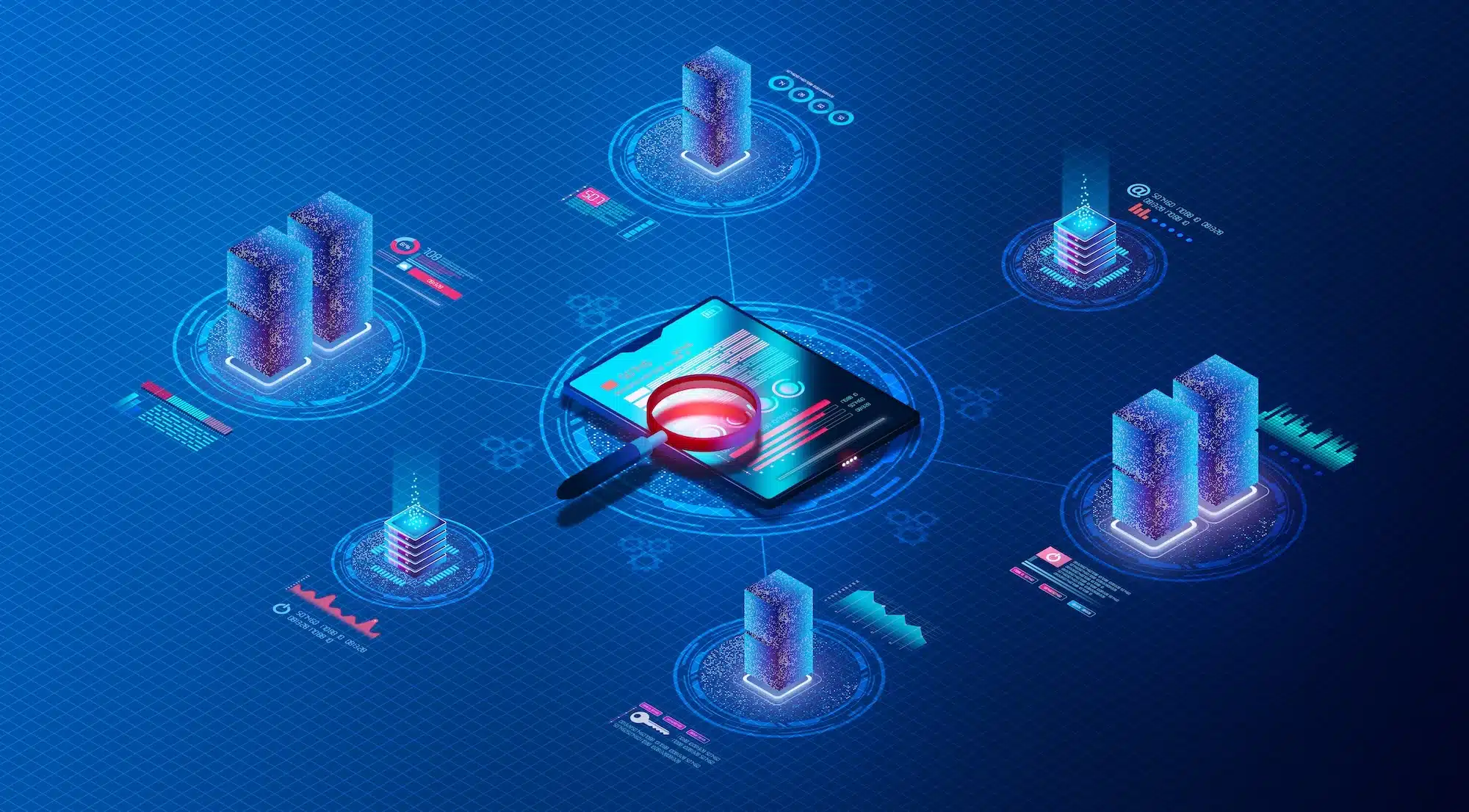As your business grows, keeping track of all your databases, data streams, and applications becomes incredibly difficult, leading to skepticism. In fact, 80% of executives do not fully trust their organization’s data, creating a challenge when it comes to making critical business decisions with confidence.
The solution is data observability, which offers a proactive approach to ensuring data quality and reliability throughout your system. With observability, you can trace data flows from end to end, gaining critical context about data usage and performance.
Read on to learn more about what data observability is and how it can help you optimize processes, improve data quality, and ensure regulatory compliance.
What Is Data Observability?
Data observability is a practice that provides your business with end-to-end visibility into all your data pipelines, enabling you and your team to monitor the databases, data streams, and applications that power your business. This provides the transparency needed to track how data moves from creation to consumption without anything falling below the radar undetected.
Why Is Data Observability Important?
Data observability ensures data quality, optimizes pipeline performance, enhances compliance, furthers collaboration, and reduces operational costs, leading to more reliable data-driven decision-making across your organization. Here’s a detailed breakdown:
- Ensures data quality: Observability allows you to examine data integrity as it moves through pipelines continuously. Errors can receive prompt attention before impacting outcomes.
- Improves data pipeline performance: Bottlenecks, inconsistencies, and other operational problems in data pipelines are detected early. Refined workflows result in smooth and reliable processing.
- Enhances compliance and governance: Visibility into your entire data flow helps your business adhere to privacy, security, and regulatory policies.
- Encourages collaboration and transparency: Improved communication without silos between teams also supports collaborative work across departments.
- Reduces operational costs: Observability can prevent expensive downstream effects caused by inaccurate reporting, poor choices, or system failures.
Data Observability vs. Data Quality vs. Data Governance
While related, these three areas each serve distinct purposes. Let’s take a look at their differences in detail:
Data Observability
Data observability provides visibility into all data pipelines and flows. It monitors for quality issues or anomalies that could impact customers. It exhibits the following characteristics:
- Reveals end-to-end data movement
- Tracks data quality and pipeline functioning
- Enables root cause analysis and issue resolution
- Boosts collaboration
Data Quality
Data quality focuses on ensuring data is accurate, full, and consistent. It offers these features:
- Guarantees correctness, completeness, and uniformity of data
- Profiles data to identify errors or inconsistencies
- Cleans data issues at the source or on intake
- Applies set standards to data
Data Governance
Data governance establishes management systems for all company data. It includes the following notable features:
- Creates policies, standards, and processes for managing data
- Confirms adherence to regulations and privacy laws
- Defines ownership of and access to data
- Manages data life cycle from start to finish
While data observability provides essential continuous monitoring of your data systems, data quality practices ensure your data is accurate and ready for use, and data governance establishes the necessary structure and security for your data operations. Together, these practices form a comprehensive approach to managing your data assets effectively.
How Does Data Observability Work?
Data observability involves collecting metrics, logs, and events from your pipelines to gain insights into the health and performance of your data systems. You can also monitor how data moves throughout its lifecycle in your business, ensuring data integrity as it transforms between systems. The main components examined by data observability include the following:
- Data Freshness: Your solution monitors how current your data stays and how often it updates. This helps you be sure that the data used for decisions reflects the real world.
- Data Distribution: Distribution examines whether values within fields follow expected patterns. It alerts you if unusual changes appear that require investigation.
- Data Volume: Tracking intake volumes ensures your processes manage the quantities required and remain within set limits, maintaining smooth operations.
- Data Schema: Changes to data schemas often lead to data breakages or integrity issues. Observability helps maintain consistent structure, compatibility, and data quality throughout your business’s activities.
- Data Lineage: When questions arise, lineage shows where issues started and what led to them. This speeds up problem resolution to minimize disruption.
What Are the Benefits of Embracing Data Observability?
Data observability offers comprehensive benefits including improved data quality, optimized performance, enhanced compliance, increased efficiency, better collaboration, and scalability, all of which contribute to more informed decision-making and operational excellence. Let’s examine how these various aspects of data observability can positively impact your business operations:
Improved Data Quality and Reliability
With data observability, you can quickly detect any issues or inconsistencies in your data flows and structures. This increases confidence in the data’s reliability, powering essential business decisions.
Optimized Data Pipeline Performance
Data observability allows your team to monitor how efficiently data moves across your databases, applications, and streams. You can quickly pinpoint where delays exist and enhance processes, resulting in faster data delivery and improved customer and user experiences.
Enhanced Compliance and Governance
When you have full transparency into how data moves through your systems, enforcing any access or security policies your business requires is simplified. You can also unlock the power of your information while following the necessary data breach and privacy regulations.
Increased Operational Efficiency
Observability also reduces employees’ manual work through automatic monitoring and alerts. This lowers operational costs while freeing up time for more valuable strategic tasks.
Better Cross-Department Collaboration
Every team and department in your business has unified visibility. This enhances collaboration and breaks down silos for streamlined processes.
Scalability and Adaptability
A data observability solution adapts as your needs evolve. You gain the flexibility to experiment while preparing infrastructure for future technologies and larger volumes. The ability to change with market dynamics helps businesses thrive.
Post Consumer Brands, an iconic packaged goods manufacturer, partnered with Boomi to modernize their integration and data management capabilities. With Boomi’s Enterprise Platform, Post is now better able to manage their APIs, synchronize trusted data with master data management, and onboard and integrate new acquisitions in the future from a single unified solution.
7 Steps to Implement Data Observability for Your Business
While the benefits of data observability are clear, a hasty or poorly-planned implementation can lead to false confidence and costly errors. A methodical approach to data observability is not just beneficial—it’s essential for long-term success. Here are seven crucial steps for a thoughtful, effective implementation of data observability in your business:
1. Establish a Data Governance Framework
The first step is to define who is responsible for specific aspects of your business data. Ensure roles and duties are clear for your team members, and then develop policies around data usage, privacy, and compliance. You’ll also want to ensure compliance with regulations and data privacy laws.
2. Identify Critical Data Pipelines
Focus on the data most essential to supporting your key business operations. Take time to map how that information flows between different systems and teams. Understanding these connections and what business needs they meet is valuable for determining high-priority areas to start with to see results sooner.
3. Select Observability Tools and Platforms
Carefully evaluate different tools to find the best integration option with your existing data ecosystems. Make sure any platform you pick can easily expand as your needs change over time. Choosing the right technology makes implementation much smoother for you and your employees.
4. Implement Monitoring and Alerting
With a solution in place, you can begin monitoring your essential metrics and thresholds. Make a plan for what to track and at what levels issues should be flagged. Setting up alerts helps your team quickly identify and address irregularities so that problems can be solved efficiently.
5. Automate Checks and Analyses
Look for ways to automate regular quality checks of your data through configurations in your observability tools. You could also use machine learning for tasks like automatic anomaly detection. If continually optimized, machine learning models can refine your data observability process.
6. Promote Collaboration and Data Literacy
Encourage collaboration by building a culture of transparency and shared data understanding across teams. Provide guidance and learning opportunities on related best practices. You should also promote data-driven decision-making by integrating data insights into everyday workflows and strategic planning.
7. Continuously Improve and Iterate
Review your observability approaches regularly and enhance them based on experience. Adapt as your business and data needs change over time. Continuous refinement helps keep you ahead over the long term.
Why Boomi Is the Best Partner for Proactive Data Observability
Gaining visibility into your essential business information ensures improved decision-making and streamlined processes. You need a partner who offers specific capabilities to implement a robust system.
Boomi’s integration platform as a service (iPaaS) is the right choice for your business. Our platform delivers the following :
- Cloud-Native and Scalable: Boomi’s solution supports distributed computing environments. It easily adapts as your needs change over time.
- Extensive Pre-Built Integrations: Boomi supports over 200 million pre-built connections. This helps your team quickly link important systems.
- B2B/EDI Management: Smoothly exchange information with partners through dedicated business-to-business tools.
- API Management: Easily deploy and operate application programming interfaces for your organization.
- Data Hub: A single view of your master data through a centralized feature.
- Low-Code Technology: Rapidly build and customize automated workflows for your evolving business needs.
- Event Streams: High-performance processing of event-driven connections through innovative streams.
Learn more about how Boomi can deliver a flexible, scalable solution to establish data visibility through integration by requesting a demo.


 English
English 日本語
日本語